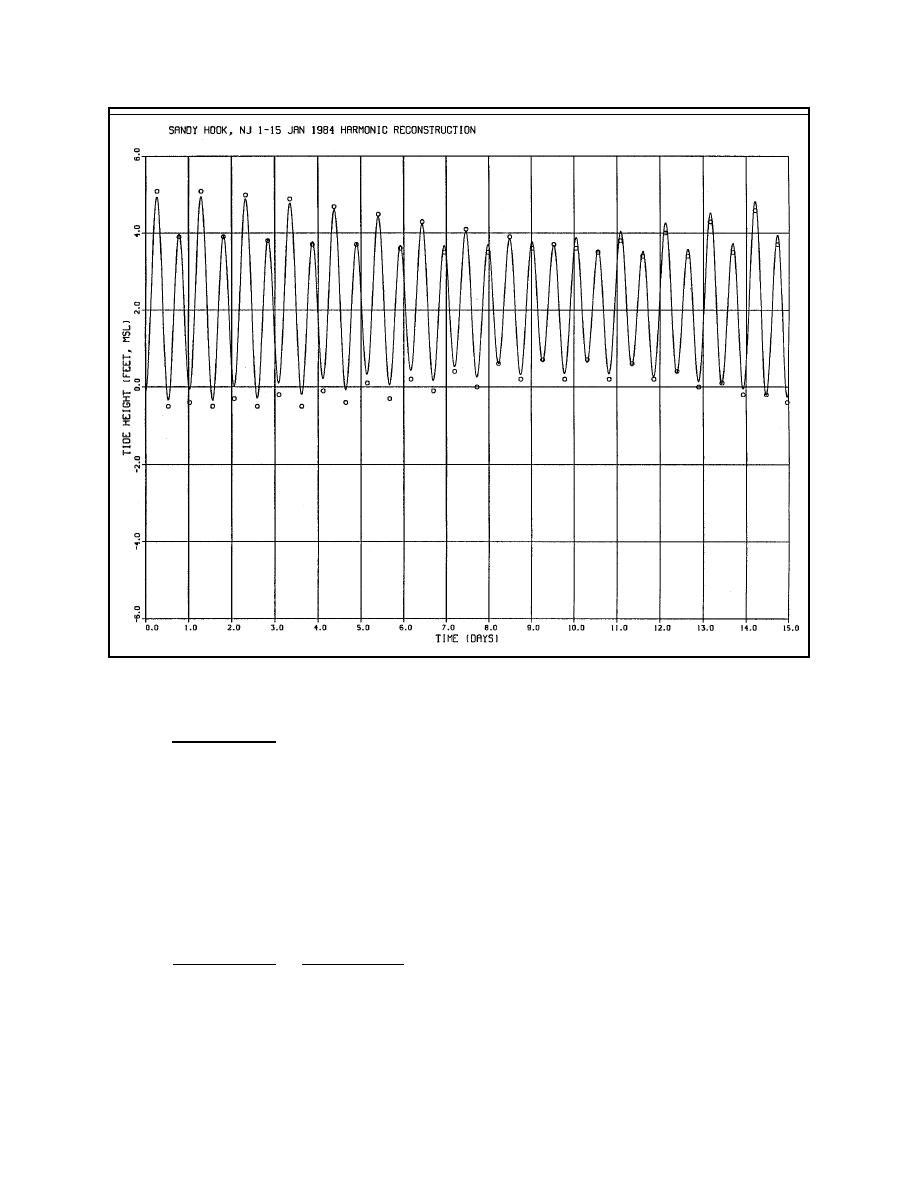
EM 1110-2-1100 (Part II)
30 Apr 02
Figure II-5-14.
Reconstructed tidal envelope for Sandy Hook, NJ
A(K1) % A(O1)
R'
(II-5-22)
A(M2) % A(s2)
where A(K1), A(O1), A(M2), and A(S2) represent the amplitudes of the corresponding constituents. A general
classification of tides can be separated according to the following criteria:
R # 0.25
Semidiurnal
0.25 < R # 1.50
Mixed
1.50 < R
Diurnal
(b) The tidal classification for the Sandy Hook, NJ, example can be computed as shown below:
A(K1) % A(O1)
0.319 % 0.172
R'
(II-5-23)
' 0.189
'
A(M2) % A(s2)
2.151 % 0.448
(c) According to the classification criteria, the tides at Sandy Hook are semidiurnal. In fact, most tides
along the northern east coast of the United States are semidiurnal. Tides in the lower east coast and Gulf of
Mexico begin to change from semidiurnal, to mixed, to diurnal as shown in Figure II-5-15.
II-5-24
Water Levels and Long Waves


 Previous Page
Previous Page
